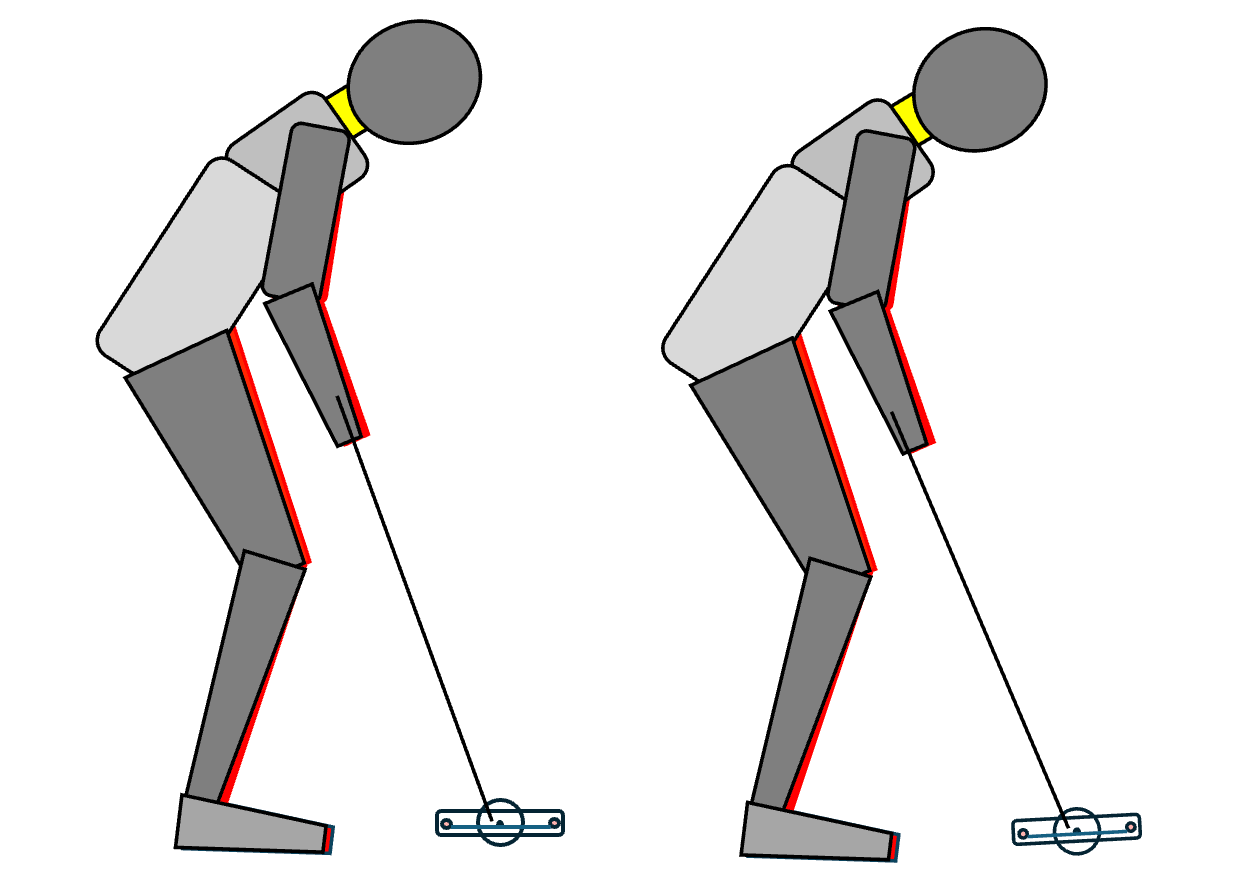As you analyze and agonize over finding the best putter for you it is especially important to consider what length and lie angle connects your hands to the ball. Once you have that accomplished it is equally important to consider what putter design best fits the lie angle you need. It is a mistake to think that all putters work at all lie angles. Mallets, with heavy head weights and wider weight distribution perform best at much different lie angles than lighter weight low MOI blades. As mallets are far more popular than blades in this current golf climate, I am going to explain what we have found works with them.
Most mallets are weighted and designed to swing on an upright stroke plane. That upright plane is best matched by a more upright lie angle for the putter. The average standard lie angle amongst putter manufacturers is 71°. These mallets are weighted and shafts installed to work at this lie angle. We know from data acquired by me, and hundreds of others that the average shaft angle at impact is 69°. So just using averages we have a 2° discrepancy between design and the average player. The numbers alone tell us that for many 71° is a forced lie angle. You can verify this everyday watching players with mallets, set up with the toe of the putter in the air. Natural requirements take over, and the toe sits up in the air. Most of the time it takes someone like me to point it out.
This is the point in the conversation when I hear, “It doesn’t make that much difference.”
It makes an enormous difference.
CAD based designs tell us where to place the weight to stabilize the head at the standard lie angle. 69° standard would be weighted differently than a 67° standard and most certainly different than 71°. One of the reasons for LAB Putters success is they weight the putter to the lie angle you need rather than force you to a lie angle the does not suit you. When you swing a mallet designed to be played 71°, at 69° or any lie angle smaller than 71° all the design benefits are out the window. The forgiveness you hoped you were buying. is no longer usable. If you can imagine where the weight is placed, (small circles in the diagram) and the direction of the force created by the weight, we can imagine how the force is applied to the ball. When the weight moves on different planes, the torque created by the imbalance of weight to putter path is hard to overcome. The further from the face the weight is placed the greater the effect on the ball. We see the result all the time. One of the tests we use in our schools is to ask a player to set a ball up with a line on the ball and simply roll the line end over end.
When the lie angle does not match and you are toe up or heel up at impact the probability of a center strike is diminished. You can see in the diagram how the center of percussion moves relative to the ball. Higher and to the right when you are toe up. Higher and to the left of the center of the ball when you are toe down. When you combine high MOI with a tilted plane you get a directional kick where the ball launches left or right of the actual face angle. I see a mallet tilted toe down miss right on a short putt at every event I watch.
There is also an influence on launch angle. Toe strikes - toe down launch higher and toe up - heel strikes launch lower. This of course makes speed control more of a guess than it already is.
There is some good news. It you have a mallet that is too flat at impact (less than 71°) it will accept bending to a more upright with no problem. Again, mallets are designed to swing on an upright plane. The reason is the amount of extra weight in the toe and the the distance it is form the shaft. More upright moves the weigh closer to the shaft. Flatter lie angles pull the weight away. One issue with bending a mallet flatter is the amount of weight on the toe side of the putter. So shorter lengths work and upright lies work. The weighting helps because you are moving in the direction the design intended. A more up right plane.
Next up. What works with blades and flatter planes.



How can we know fitting a putters lie angle to how we set up and putt will make us a better putter?
What if I putt at 67 degree, then get fit for 67 degree angled putter. That doesnt mean it will help. Or maybe eventhough i putt at 67 degree, i would be a better putter at 70 degree and should move closer or have a shorter putter?
Just because we adjust or fit a putter to an angle to match how we putt does not mean we will be any more consistent.
Maybe adjusting our approach or angle from from 68 to 70 degree will result in better putting?
Would Isai Aoki have made more putts and won more tourneys if he had a 65 degree lie angle putter? If he did, he would probably leave putts to the right and then have to make adjustments to get it back online, and there is no way to know if he would putt better.